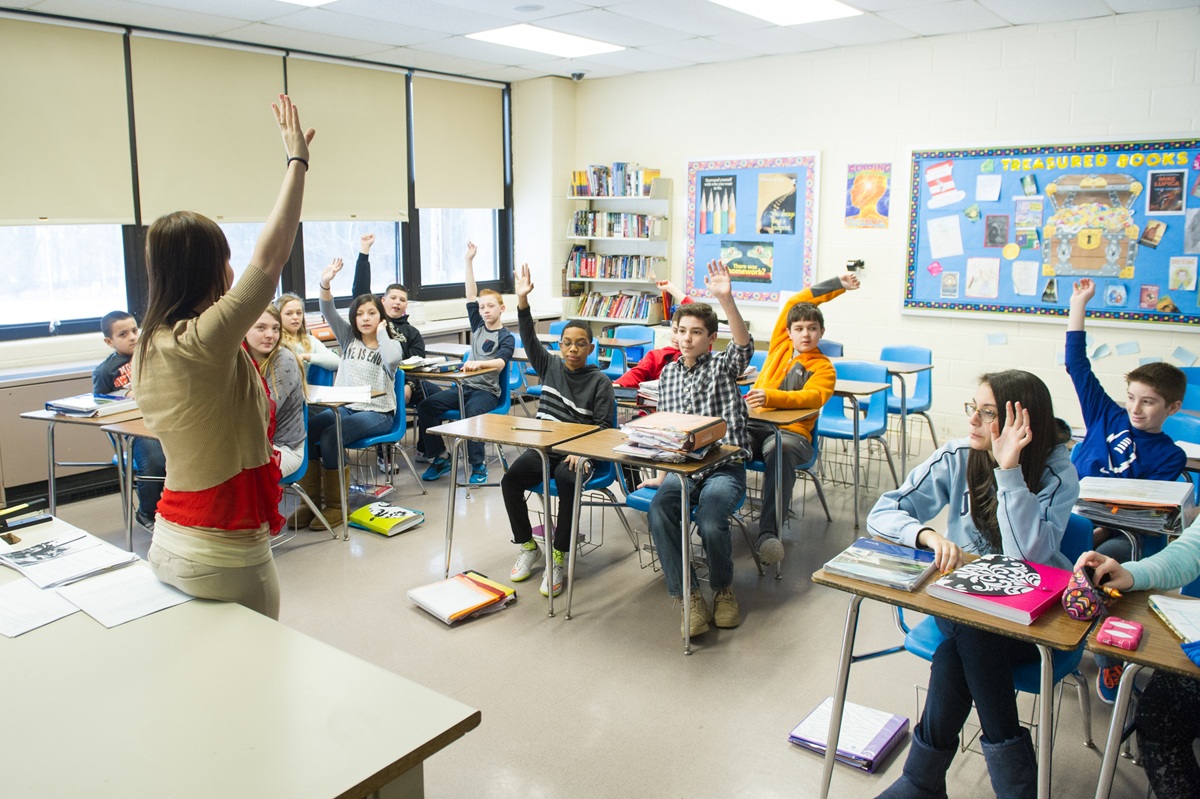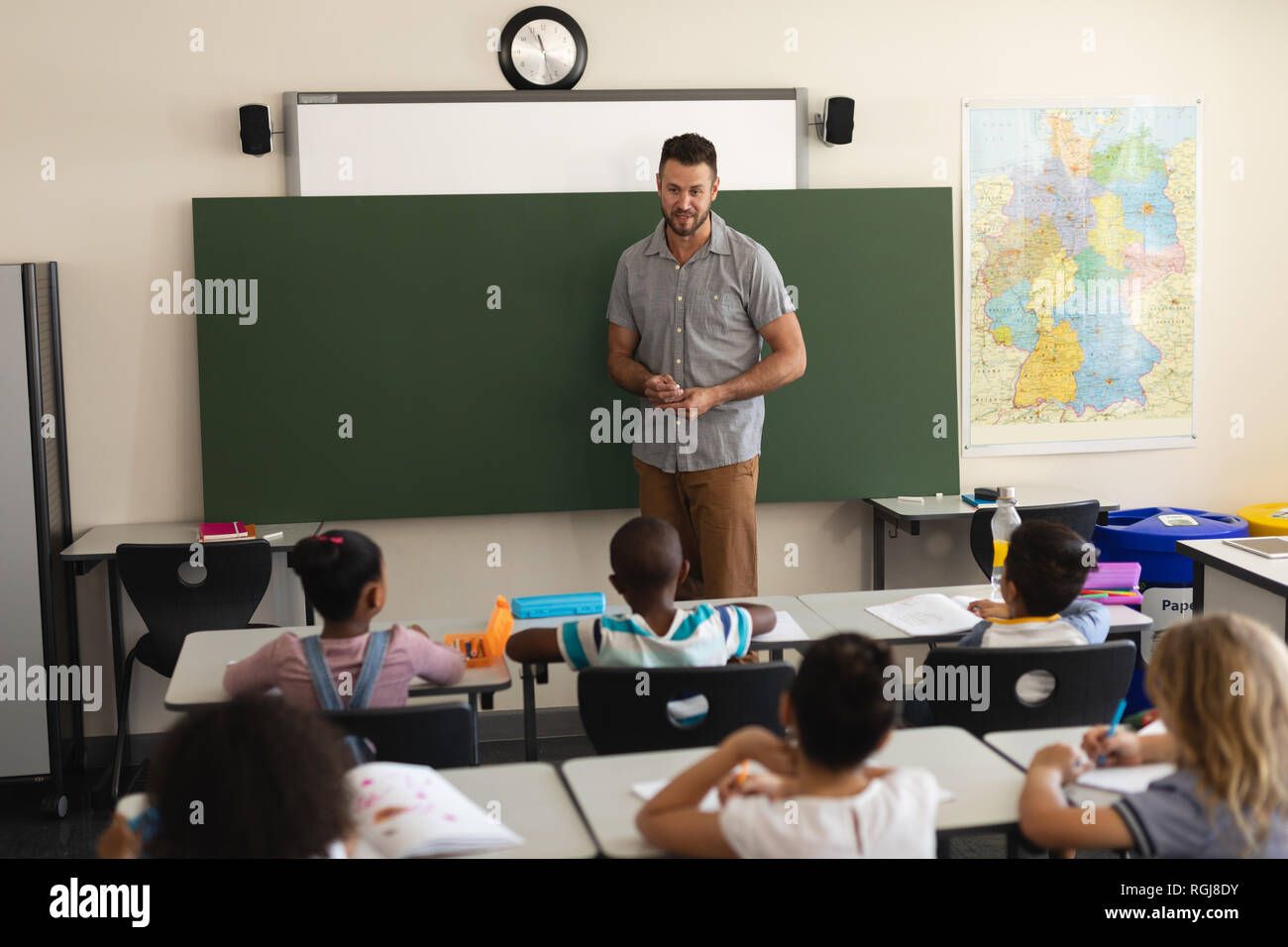Improve Your Child’s Performance with Primary Science Tuition Singapore
Improve Your Child’s Performance with Primary Science Tuition Singapore
Blog Article
A Comprehensive Guide to the Different Understanding Approaches in Primary Scientific Research Direction
The expedition of varied learning approaches in primary science instruction provides an opportunity for educators to improve trainee involvement and understanding significantly. By examining hands-on knowing strategies, inquiry-based approaches, and joint strategies, we can recognize efficient practices that cater to different discovering styles.

Hands-On Learning Methods
Hands-on learning methods play a critical duty in main science guideline, engaging students in active exploration and experimentation. These techniques enable students to communicate straight with sensations and materials, cultivating a deeper understanding of scientific ideas. By utilizing manipulatives, models, and real-life experiments, instructors develop a setting where students can observe, assume, and examine their ideas.
Such methods not only boost comprehension yet also cultivate vital thinking and analytic abilities. When trainees join activities like constructing simple equipments, planting seeds, or performing chemical responses, they are urged to ask concerns and seek answers through their own observations. This experiential strategy assists to demystify intricate scientific principles, making them more relatable and accessible.
Furthermore, hands-on knowing promotes cooperation amongst peers, as trainees commonly operate in teams to perform experiments or share findings. This teamwork not only enhances their discovering experience but also develops necessary social skills. Ultimately, incorporating hands-on techniques in primary scientific research instruction cultivates a long-lasting love of discovering and curiosity about the environment, laying a strong foundation for future academic pursuits in science and past.
Inquiry-Based Learning
Inquiry-based understanding is an educational method that motivates trainees to ask questions, explore sensations, and build their very own understanding of scientific principles. This technique changes the emphasis from conventional teacher-led direction to an extra student-centered experience, where students take the initiative in their instructional trip. By fostering inquisitiveness, inquiry-based knowing promotes deeper interaction with the material, permitting students to check out topics in a purposeful context.
In technique, this technique commonly includes hands-on experiments, observations, and critical thinking activities that line up carefully with the scientific approach. Students are motivated to create hypotheses, style examinations, and evaluate information, which cultivates crucial skills such as analytic and logical thinking. The role of the teacher in this framework is to help with expedition, guiding students with the questions procedure while urging independent idea and partnership.
Moreover, inquiry-based understanding supports a feeling of possession over the understanding procedure, encouraging students to seek knowledge actively. This approach not only improves understanding of clinical ideas however additionally promotes a long-lasting love for discovering, furnishing pupils with the skills needed to browse a progressively intricate world.
Collaborative Understanding Approaches
Collective knowing methods equip students to engage in meaningful communications with peers, cultivating a shared obligation for their educational results. In main science direction, these methods motivate students to collaborate to explore scientific concepts, resolve issues, and carry out experiments (primary science tuition Singapore). By participating in team activities, pupils can utilize diverse point of views, permitting richer understanding and retention of clinical understanding
One key element of joint knowing is the emphasis on interaction abilities. Students should articulate their ideas, pay attention proactively to others, and bargain ideas, all of which are important expertises in both real-world and scholastic contexts. This social interaction not only boosts their understanding of clinical concepts yet additionally advertises team effort and problem browse around here resolution abilities.
When trainees see the worth of their contributions within a group, they are a lot more likely to take ownership of their understanding trip. On the whole, integrating collective discovering methods in key scientific research guideline cultivates a vibrant learning environment that prepares pupils for future academic and social challenges.
Innovation Assimilation in Scientific Research
The integration of technology in primary scientific research instruction boosts learning experiences by offering cutting-edge tools and resources that sustain different training techniques, including collaborative understanding - primary science tuition Singapore. Making use of digital systems, simulations, and interactive applications permits trainees to involve deeply with clinical concepts, promoting a much more hands-on method to knowing
Virtual laboratories, for instance, enable students to perform experiments safely and effectively, promoting inquiry-based discovering. These tools can simulate real-world clinical scenarios, enabling pupils to visualize complicated processes that would be challenging to reproduce in a typical class setting. Modern technology promotes communication and cooperation among trainees, as they can share findings and work together on jobs via on the internet systems.
Additionally, multimedia presentations and instructional videos can improve lessons by dealing with diverse discovering styles, making abstract principles a lot more available. Information analysis devices likewise equip students to collect and analyze scientific data, enhancing important assuming abilities. On the whole, the calculated incorporation of technology in main science guideline not only boosts involvement however additionally prepares pupils for a technologically sophisticated society, equipping them with essential skills for future scientific undertakings.
Separated Direction Strategies
Differentiated guideline approaches are crucial for resolving the varied needs of learners in key science education. These methods make it possible for teachers to customize their mentor methods to accommodate varying capabilities, rate of interests, and discovering designs within the classroom. By using set apart guideline, teachers can develop an inclusive setting that fosters interaction and enhances understanding of scientific concepts.
One effective method is to make use of versatile organizing, which allows students to work together with peers at comparable skill degrees or with varying point of views. This method urges see this site peer discovering and advertises vital reasoning. In addition, supplying choices in jobs can equip trainees, enabling them to select jobs that reverberate with their passions while still meeting curricular goals.
Additionally, incorporating tiered assignments is an additional valuable strategy. Deliberately jobs with varying levels of intricacy, educators can make certain that all students are properly challenged, despite their effectiveness. Utilizing formative assessments to determine comprehending additional allows teachers to change their educational methods dynamically, ensuring that each student gets the support they require.
Inevitably, applying distinguished direction methods in key scientific research education and learning not just improves trainee understanding results but additionally cultivates an interest for science, preparing students for future academic pursuits.

Verdict
In summary, reliable main science direction necessitates a multifaceted method that incorporates hands-on discovering, inquiry-based techniques, and collective methods. The assimilation of innovation and set apart guideline additionally caters to diverse knowing designs, cultivating an atmosphere helpful to expedition and critical reasoning.
The exploration of varied knowing techniques in primary navigate to this site scientific research direction provides a chance for teachers to improve pupil involvement and comprehension significantly.Hands-on learning techniques play a pivotal duty in key science guideline, engaging students in active expedition and trial and error.Inquiry-based knowing is an educational technique that encourages pupils to ask concerns, investigate phenomena, and build their own understanding of clinical concepts.Collective learning strategies empower trainees to engage in purposeful interactions with peers, fostering a shared responsibility for their academic end results. Generally, including joint understanding methods in key science direction grows a vibrant learning setting that prepares trainees for future scholastic and social difficulties.
Report this page